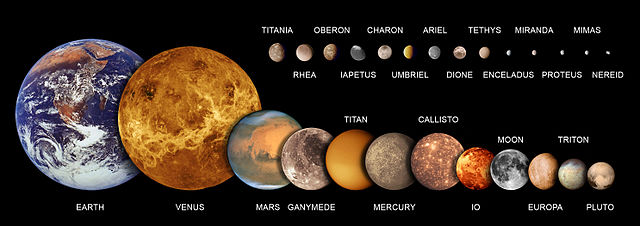A rogue planet, also termed a free-floating planet (FFP) or an isolated planetary-mass object (iPMO), is an interstellar object of planetary mass which is not gravitationally bound to any star or brown dwarf.
The cold planetary-mass object WISE J0830+2837 (marked orange object) observed with the Spitzer Space Telescope. It has a temperature of 300-350 K (27-77°C; 80-170 °F)
JuMBO 31 to 35 in the Orion Nebula with NIRCam
Artist's conception of a Jupiter-size rogue planet.
A planetary-mass object (PMO), planemo, or planetary body is, by geophysical definition of celestial objects, any celestial object massive enough to achieve hydrostatic equilibrium, but not enough to sustain core fusion like a star.
The planetary-mass moons to scale, compared with Mercury, Venus, Earth, Mars, and Pluto (the other planetary-mass objects beyond Neptune have never been imaged up close). Borderline Proteus and Nereid (about the same size as round Mimas) have been included. Unimaged Dysnomia (intermediate in size between Tethys and Enceladus) is not shown; it is in any case probably not a solid body.
Planetary-mass satellites larger than Pluto, the largest Solar dwarf planet.
The dwarf planet Pluto
Artist's impression of a super-Jupiter around the brown dwarf 2M1207.







